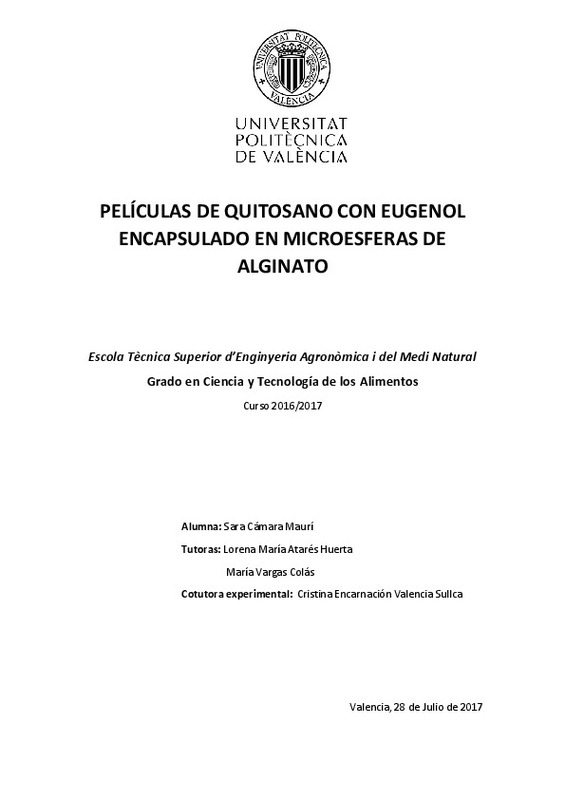JavaScript is disabled for your browser. Some features of this site may not work without it.
Buscar en RiuNet
Listar
Mi cuenta
Estadísticas
Ayuda RiuNet
Admin. UPV
Films de quitosano con eugenol encapsulado en microcápsulas de alginato
Mostrar el registro completo del ítem
Camara Mauri, S. (2017). Films de quitosano con eugenol encapsulado en microcápsulas de alginato. http://hdl.handle.net/10251/89459.
Por favor, use este identificador para citar o enlazar este ítem: http://hdl.handle.net/10251/89459
Ficheros en el ítem
Metadatos del ítem
| Título: | Films de quitosano con eugenol encapsulado en microcápsulas de alginato | |||
| Autor: | Camara Mauri, Sara | |||
| Director(es): | Valencia Sullca, Cristina Encarnación | |||
| Entidad UPV: |
|
|||
| Fecha acto/lectura: |
|
|||
| Resumen: |
[EN] To prevent the accumulation of plastic waste and to extend the shelf- life of food, packaging and films obtained from biodegradable materials are currently being developed. In this work we intend to obtain chitosan ...[+]
[ES] Para evitar la acumulación de residuos plásticos y conseguir alargar la vida útil de los alimentos,
se están desarrollando en la actualidad envases y películas obtenidas a partir de materiales
biodegradables. En ...[+]
|
|||
| Palabras clave: |
|
|||
| Derechos de uso: | Reserva de todos los derechos | |||
| Editorial: |
|
|||
| Titulación: |
|
|||
| Tipo: |
|
recommendations
Este ítem aparece en la(s) siguiente(s) colección(ones)
-
ETSIAMN - Trabajos académicos [3551]
Escuela Técnica Superior de Ingeniería Agronómica y del Medio Natural







